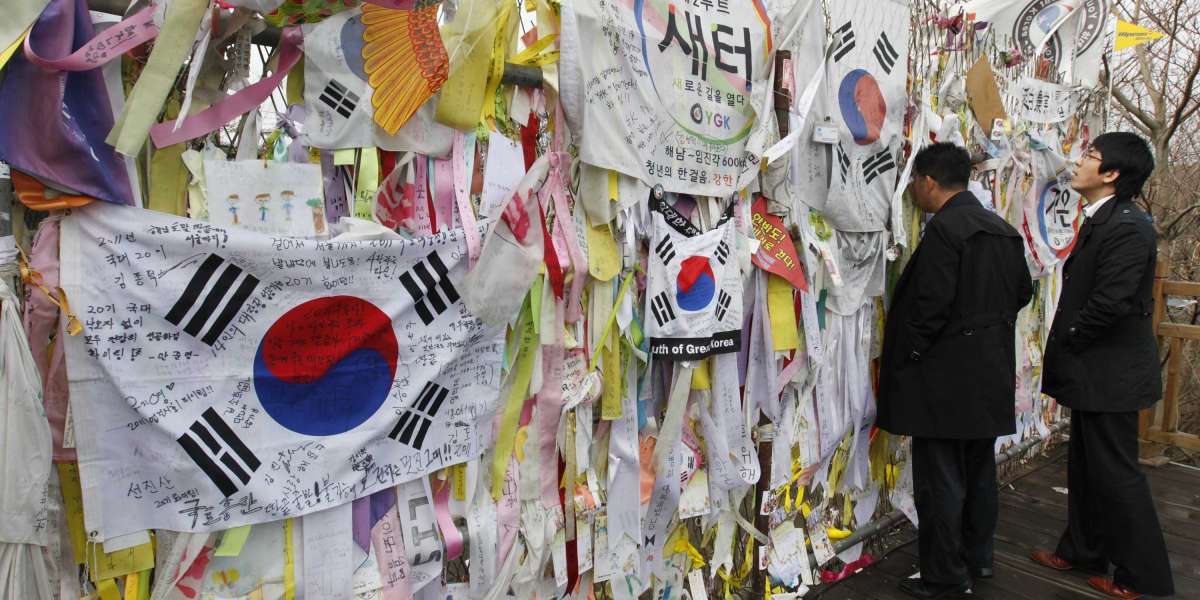Many people may believe that a unified North and South Korea is a long way off. Few traces of reunion can be seen through the highly fortified military barrier that separates the two Koreas. The North's bellicose nuclear goals, UN sanctions against their economy, and repeated human rights breaches on the side of the regime have all made unification less feasible.
However, changes in global politics, such as the 2019 summit between US President Donald Trump and North Korean Supreme Leader Kim Jong Un, the April 2020 South Korean parliamentary elections, and global efforts to normalize relations between the hermit nation and its neighbors, have altered the reunification conversation. What impact would reunification have on the global economy? Massive shifts.
To understand what a unified Korea may look like, we must first examine how the two countries differed following the Korean War armistice that separated the peninsula in 1953.
North Korea (North Korea)
To say the least, North Korea's $40 billion GDP is one-of-a-kind. The totalitarian country is governed by Kim Jong Un, a hereditary supreme leader who wields authority over all elements of life in North Korea, from the economy to how people dress.
The North Korean economy is centrally planned, similar to the Soviet system. North Korea has become one of the world's most isolated economies, valuing self-reliance and military over everything else under the leadership of three generations of dictatorial rulers—Kim Il Sung, Kim Jong Il, and Kim Jong Un.
The development of nuclear weapons is crucial to the country's military and political objectives. North Korea's unwavering pursuit of a nuclear program drew them into a confrontation with the United States and the European Union, who placed severe economic sanctions on their ruling class as well as other sections of their economy in 2013.
North Korea has been subjected to restrictions on the export of copper, nickel, zinc, silver, coal, iron, lead, seafood, textiles, and natural gas since 2016. The country has suffered from food shortages, mass famine, underdevelopment, and enormous unemployment as a result of these sanctions and harsh isolation.
As of September 2019, China was North Korea's top commercial partner, getting 91% of its exports and 94% of its imports.
Military products, coal and iron mining, metallurgy, and textiles are the key industries in this isolated country. North Korea's overall economic growth has been sluggish or nonexistent. From 2000 to 2005, annual GDP growth was around 2%, compared to South Korea's 6%. 5 The country suffered negative growth from 2006 to 2010. 6 The GDP growth rate for 2020 is predicted to be -4.1 percent, with a 5-year compound annual growth rate of -0.8 percent.
While North Korea is not economically advanced, it does contain a wealth of undeveloped and untapped natural resources valued in the trillions of dollars (most estimates range from $6 to $9 trillion).
This is one of the reasons why nations like China and Russia are eager to invest in the DPRK.
Korea, South
South Korea's economy is also distinct for a variety of reasons. After the 1953 split, while North Korea prioritized isolation, South Korea did the exact opposite. It is now the fourth-largest economy in Asia and the 14th largest in the globe.
The "miracle on the Han River" refers to South Korea's amazing economic boom that catapulted the country out of poverty and into the "trillion-dollar club." The country swiftly expanded and modernized in a single generation, winning its membership in the Organisation for Economic Co-operation and Development (OECD) in 1996 with the world's richest industrialized nations. 10 Many people credit South Korea's economic success to the country's rigorous education system, which has historically produced a well-educated and highly motivated workforce.
In terms of GDP, South Korea's economy is 40 times greater than North Korea's. The GDP of South Korea is predicted to reach $1.64 trillion in 2019. Due to the country's scarcity of natural resources, South Korea adopted an export-oriented strategy and rose to become the world's fifth-largest exporter. While North Korea maintains a constant trade imbalance, South Korea has focused on exporting goods and services in the electronics, telecommunications, car, and chemical industries. 11 South Korean names such as Samsung, SK Hynix, LG Chem, Hyundai Motors, Kia Corporation, and POSCO are ubiquitous in the United States.
Reunification
North and South Korea were split in 1953 and took quite divergent paths. Under a centrally controlled economy, the North relied on isolation and natural resource exploitation, becoming one of Asia's poorest economies. Adopting a free market economy, the South strove for global market integration and the growth of its high-tech industries, propelling it to the fourth-largest Asian economy. However, it is these disparities that may cause Korean reunification to have such a dramatic impact on the global economy.
According to a Goldman Sachs analysis, a united Korean economy might be larger and more influential than Germany or Japan. Their reasoning is as follows: while North Korea's economic structure looks to be in perpetual disarray, it provides a wealth of minerals as well as a vast and inexpensive labor force. Combine it with a mineral-poor South Korea that is largely reliant on imports to fuel its enormous industry, and you have a recipe for development. According to the analysis, "a unified Korea may exceed France, Germany, and possibly Japan in terms of GDP in US dollar terms in 30-40 years."
Providing inexpensive labor and raw materials to a nation that already has a well-established and productive free-market economy is a prescription for long-term growth and success.
What Is the Chance of Reunification?
President Donald Trump of the United States met North Korean leader Kim Jong Un in 2018. The two presidents talked about the potential of normalizing relations between their respective countries. Talks for disarmament hinted to future conversations about reunification. Un discussed reunification several times in his 2018 New Year's speech. 13 Three months later, at a summit in Panmunjom, North and South Korean leaders signed an agreement pledging both Koreas to peace by the end of the year. 14
The elections in South Korea, however, were one of the most significant shifts that may have gone missed by many. On June 13, 2018, the left-wing Minjoo Party won all but three of the country's 17 mayor and governor contests, as well as 11 of the 12 available seats in the National Assembly. This implies that President Moon Jae-party, in's which has long advocated for closer relations with the North, has increased its clout in policy choices. If reunification discussions begin, South Korean unity will be critical. We can see a legislative and political foundation for that agreement here.
While reunification remains uncertain and, at best, distant, analysts are warning big economies to brace themselves for what could be a dramatic shift in global economic power.



